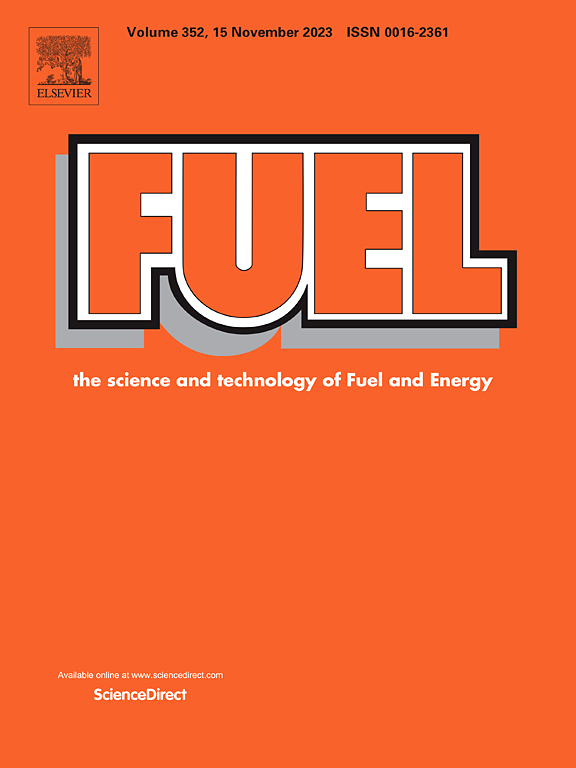CO2 methanation over Ru catalysts: Support engineering on the induction period via tuning metal-support interaction
IF 6.7
1区 工程技术
Q2 ENERGY & FUELS
引用次数: 0
Abstract
Support engineering on the induction period during CO2 methanation over Ru catalysts were highlighted. The evaluation at 400 °C illustrated that the initial reaction rate over Ru/CeO2 (52.3 ) was the highest, whereas it showed an obvious proliferation over Ru/γ-Al2O3 and Ru/SiO2 (from 33.0 and 46.3 to 59.9 and 51.8 , respectively). The above three catalysts exhibited high CH4 selectivity (>96 %). However, Ru/TiO2 showed the lowest reaction rate (14.0 ) with 100 % CO selectivity. The comprehensive characterization demonstrated that the relatively strong metal-support interaction (MSI) led to the difficult-to-reduce Ruχ+ (χ = 3 or 4) species, which were responsible for the occurrence of the induction period. TiOx overlayer on Ru/TiO2 due to the overly strong MSI resulted in the absence of Ru0 and weak CO bonding, accompanied by the inferior performance and no CH4 product. The basic sites and oxygen-containing groups on the support were involved in the formation of the intermediates. Furthermore, we discussed the reaction mechanisms over Ru catalysts through in situ DRIFTS technique. This work clearly illustrated the correlation between the induction period and MSI modulated via support engineering, which could provide some meaningful references for the rational design of the highly efficient CO2 hydrogenation catalysts.

求助全文
约1分钟内获得全文
求助全文
来源期刊

Fuel
工程技术-工程:化工
CiteScore
12.80
自引率
20.30%
发文量
3506
审稿时长
64 days
期刊介绍:
The exploration of energy sources remains a critical matter of study. For the past nine decades, fuel has consistently held the forefront in primary research efforts within the field of energy science. This area of investigation encompasses a wide range of subjects, with a particular emphasis on emerging concerns like environmental factors and pollution.
 求助内容:
求助内容: 应助结果提醒方式:
应助结果提醒方式:


